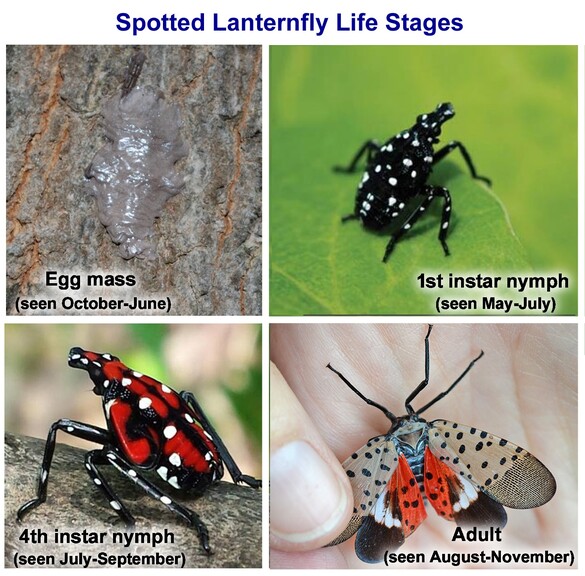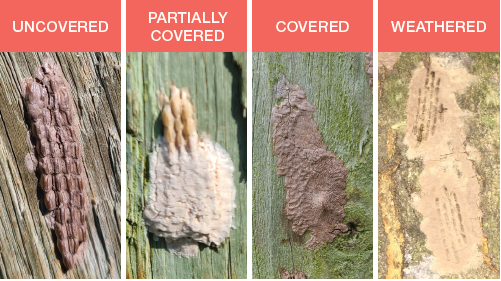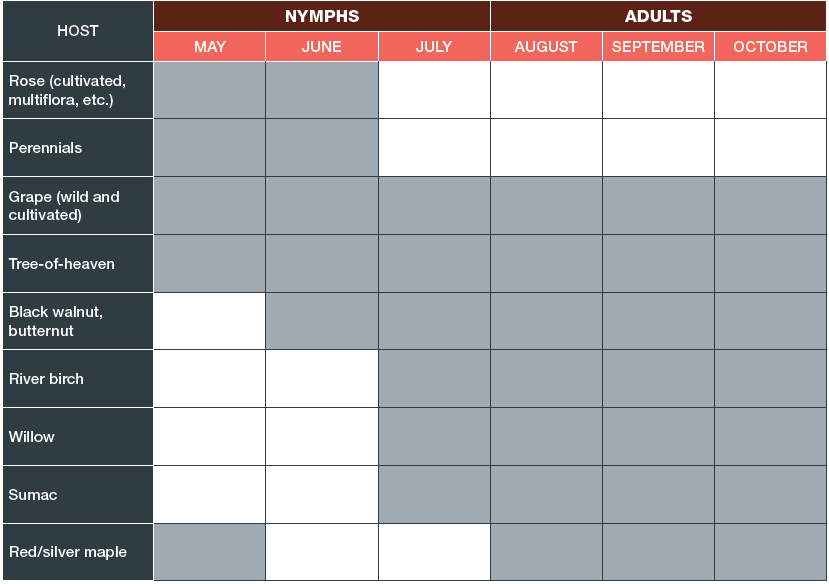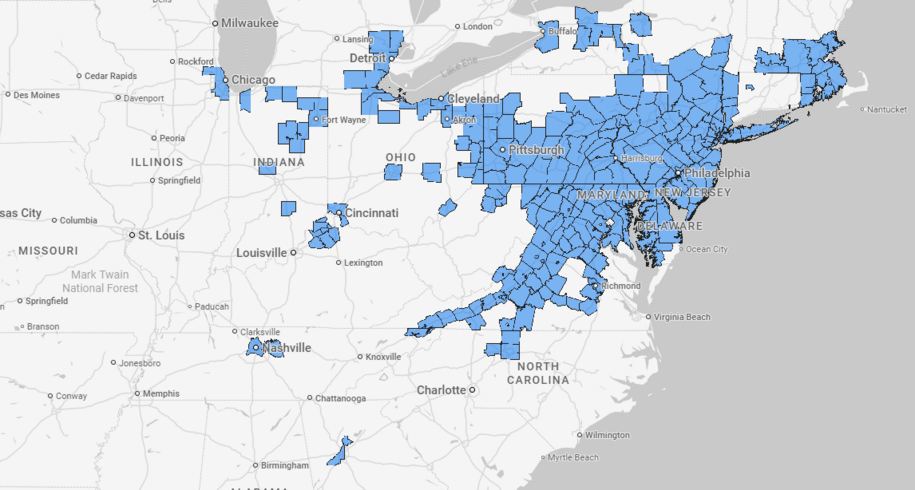On this page...
About the Spotted Lanternfly
The spotted lanternfly (Lycorma delicatula) is an invasive plant hopper native to China. It likely arrived in North America hidden on goods imported from Asia.

Juvenile spotted lanternflies, known as nymphs, and adults prefer to feed on the invasive tree-of-heaven (Ailanthus altissima), but also feed on a wide range of crops and plants, including grapes, apples, hops, walnuts and hardwood trees. The insects suck sap from stems and branches which can weaken and damage the plant. This feeding also leaves behind a sticky, sugary residue called honeydew that attracts other insects and promotes the growth of sooty mold, which can further damage the plant.

Impacts
The spotted lanternfly causes serious damage including oozing sap, wilting, leaf curling and dieback in trees, vines, crops and many other types of plants. When spotted lanternflies feed, they excrete a sugary substance, called honeydew, that encourages the growth of black sooty mold. This mold is harmless to people, but causes damage to plants.
In counties infested and quarantined for spotted lanternfly, residents report hundreds of the lanternfly affect their quality of life and ability to enjoy the outdoors during the spring and summer months. Spotted lanternflies will cover trees, swarm in the air, and their honeydew can coat decks and play equipment.

Current Location
Back to topHelpful Resources
- Control Options
- Spread Risk Map
- Animal and Plant Health Inspection Service
- Global Spread Model
- Tree-of-Heaven Identification - Penn State
Learn More
- Identify your own pests (insect, invasive plants, diseases, and more).
- View the latest pest updates.
- iEcoLab Spotted Lanternfly Dashboard
- Plant and Insect Diagnostic Clinic
- Have you seen a spotted Lanternfly?
